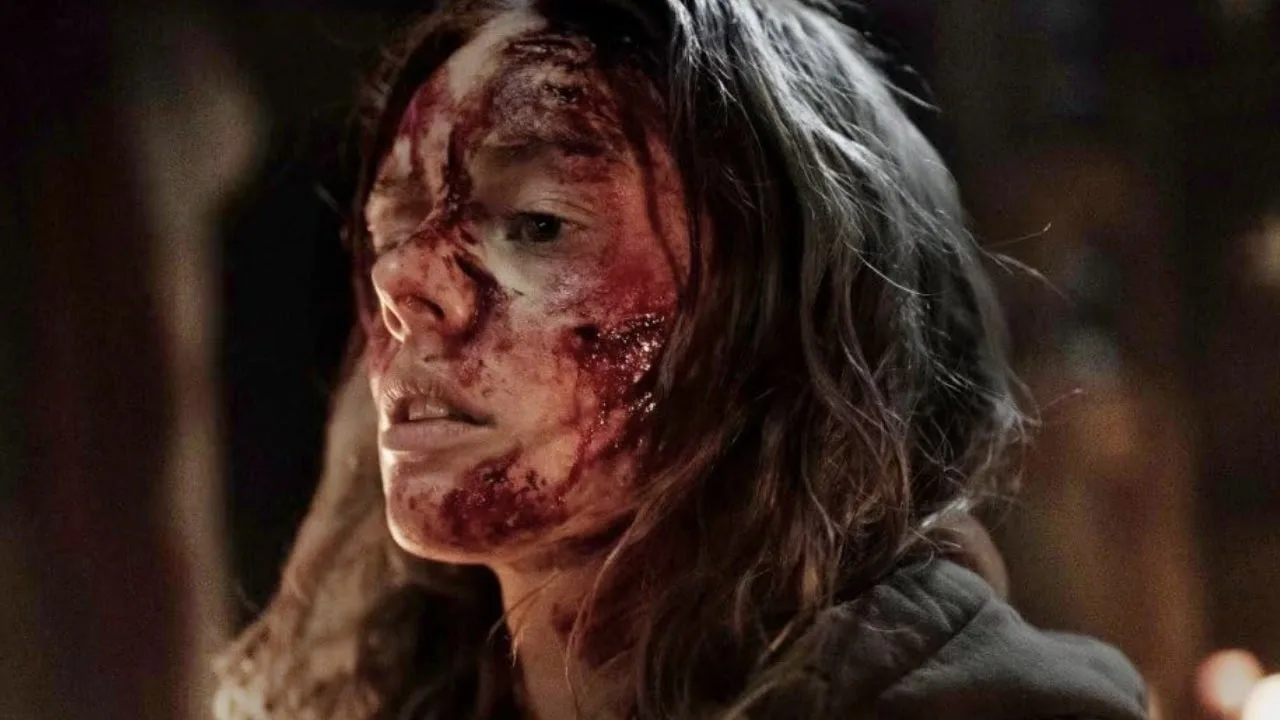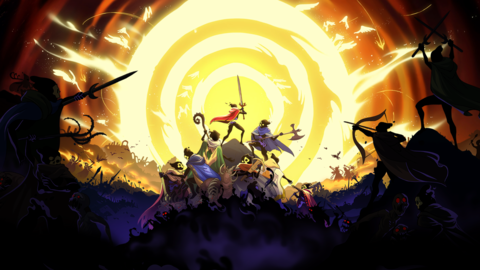Republic Pictures will release Azrael at a date TBD. This review is based on a screening at the 2024 SXSW Film Festival.
Samara Weaving has a face for the silents. Her wide, expressive eyes and mouth can say as much as pages full of dialogue, which makes her the ideal star for Azrael. Directed by E.L. Katz – a horror specialist whose resume includes episodes of Channel Zero and The Haunting of Bly Manor as well as the 2013 feature Cheap Thrills – and penned by You’re Next and The Guest screenwriter Simon Barrett, this inventive and exciting action/horror hybrid is a silent film in spirit, if not in letter.
There’s very little dialogue, and what we do get is not in English. (No subtitles either, sorry.) The film takes place in a post-apocalyptic reality a few degrees off from our own, where the Rapture has already happened and, as an opening title card reads, “among the survivors, some are driven to renounce their sin of Speech.” Azrael (Weaving) is one of those survivors, a member of a religious sect living deep in the woods who cut out their vocal cords so they cannot break their vow of silence.
But the cult has betrayed Azrael and her companion Kenan (Nathan Stewart-Jarrett), casting them out and offering them as sacrifices to the terrifying “Burned Men” who lurk in the forest just outside their settlement. The creatures look like charred aliens and move like hungry zombies, and it’s not clear at first what they are, where they come from, or what attracts them. (Some, but not all, of these questions will be answered before the credits roll.) What is clear is that they’re very dangerous – scenes where a Burned Man catches up to a regular one unfold in quick, violent cuts, revealing shots of bloody prosthetics being torn apart by inhuman teeth.
No spoilers, but Azrael manages to escape. From there, Weaving takes off running, establishing a forward momentum that won’t stop until the final scene. She remains in motion for the remainder of the film, the rest of her body now as animated as her face was in all those first-act close-ups. She returns to the camp in search of revenge, prompting a back-and-forth that will see Azrael fighting against multiple attempts on her life.
From there, Azrael is one thrilling action sequence after another. Highlights include Weaving swinging by her ankle while hanging upside down from a tree, crawling through a subterranean tunnel while being pursued by a Burned Man, and spitting blood after ripping a foe’s throat out with her teeth. There’s gasping and grunting, but no yelling; at one point, a cult member screams with rage, but only a wheeze comes out. The score, from Joker arranger Tóti Guðnason, adds tension without drowning out the sound effects: Without dialogue, the sounds of wind in the trees and knives whooshing through the air become especially noticeable.
Barrett’s screenplays excel at synthesizing genre elements into something new and fresh. There are moments in Azrael that evoke films like The Village, It Follows, A Quiet Place (whose own hushed end times seem like a copout compared to this premise), Kill Bill: Volume 2, and Mad Max: Fury Road, all with a fire-and-brimstone twist. Combined with Katz’s kinetic direction and Weaving’s boundless energy – between this and Ready or Not, the poor woman’s been through a lot – it’s a winning formula.
Azrael assumes that you’re smart enough to put the pieces together on your own.
A certain amount of faith is necessary to engage with Azrael. The script doles out details about our heroine and her world slowly, in context, and some mysteries linger as the end credits roll. It assumes that you’re smart enough to put the pieces together on your own, which will drive YouTube pedants insane. (Oh well.) This is a story that’s driven by blind instinct, propelling forward with the same singular mindset as its protagonist: Keep moving, or die.


